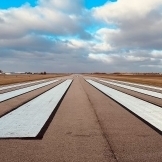

zachlog
Members-
Content Count
310 -
Donations
$0.00 -
Joined
-
Last visited
Community Reputation
18 NeutralAbout zachlog
-
Rank
Member
Contact Methods
-
Website URL
http://
-
ICQ
0
Profile Information
-
Gender
Male
-
Location
New York, U.S.
Flight Sim Profile
-
Commercial Member
No
-
Online Flight Organization Membership
VATSIM
-
Virtual Airlines
No
-
Managing Takeoffs Fenix A320 CFM vs. IAE Engines
zachlog replied to zachlog's topic in Microsoft Flight Simulator (2020)
I agree. The calculations in the EFB are probably buggy and I suspected this is the case simply because for the IAE frame I have yet to see an OPTIMUM EFB-recommended flap setting other than flaps 3. What surprises me is that for the CFM frame, the OPTIMUM flap recommendations vary and they tend to parallel my expectations per the runway length, etc.; not the case for the IAE frame. I think now I am at a point where I can make a flaps 1+F vs. a flaps 2 decision for safe takeoffs. Thanks again. -
I have noticed a difference managing and configuring takeoffs with CFM vs. IAE engines. There are two areas on which I need some feedback: Takeoff Configuration- With the CFM frame, the EFB-recommended optimum flap configuration varies depending on TOW, runway length, etc. I have seen optimum flap configurations from flaps 1 to flaps 3. With the IAE frame, I have yet to see a flap configuration other than flaps 3; it's always flaps 3 regardless of airport and runway length. Has anyone else seen this ? Any suggestions, feedback ? Initial Climb and Speed- With the IAE frame, the A/C seems to have difficulty maintaining its speed after rotation to avoid a stall. On a couple of occasions, the A/P disconnected (I had engaged it at about 1000') and I had to lower the nose to avoid a stall then gingerly raise the nose to resume the climb and re-engage the A/P. The initial climb just seems trickier with the IAE frame. Anyone else seen this ? Any feedback managing the IAE vs. the CFM frame ? Thanks
-
I have a question regarding using the Fenix radio stack. In the link below is a snapshot of the communication radios and their respective frequencies. The two arrows are pointing to the “Receive” and “Transmit” switches that are turned-on for the left VHF1 radio. All Receive & Transmit switches on the right VHF2 radio are off. With this setup my expectation is to be able to transmit to and receive from communications over frequency 122.800 in VHF1, and this works fine. The problem is that I also receive (can hear) transmissions over frequency 135.925 in VHF2 even though all the receive and transmit switches on that side are off. How do I silence the VHF2 side but still have valid frequencies tuned ? https://imgur.com/XLsTv4X
-
Fenix A320 Auto Jetway Simulation
zachlog replied to zachlog's topic in Microsoft Flight Simulator (2020)
I am not in the beta....unless Asobo slipped one in past the goalie with their recent unexplained "updates". Looks like the gateway issue is a broader problem. -
Thank you both, got it.
-
The Auto Jetway Simulation seems to be misbehaving with V2B2. On several occasions, the jetway did not disconnect/pull back (do not have GSX). No problem with the Auto Door Simulation. Both options are enabled in Sim Settings. With the prior version of the aircraft, the jetway always disconnected when the loading of all the elements in MASS & BALANCE was completed. Specifically which action triggers the jetway to auto-disconnect in V2B2 ?
-
On the A320 FCU there is a list of speed limits for (5) flap/slat extension positions- 1, 1+F, 2, 3, FULL. The control for deploying slats/flaps has only (4) positions- 1, 2, 3, FULL (plus 0 for clean). How do you map the (5) positions to the control ? Positions 1 and 1+F seem to be the key. I would appreciate an explanation on this issue.
-
OK, but it did not get rid of it/make the field not editable. The message implies the syntax of my input is incorrect.
-
First flight with V2B2, overall a great job but I do have one question/issue. The expected trip wind was a 16 mph tail wind but when I attempted to upload "TL016" to the TRIP WIND field in INIT-B, received a message in the scratchpad that the value is "INVALID.....". This is the syntax I have been using, has this changed ? I still see five dashes for expected no. of characters.
-
When I started climbing the Fenix A320 learning curve, I had assumed that packs had to be turned-off prior to engines start so that there would be sufficient bleed air to start the engines so I kept turning them OFF and then ON after engines start. In one of my earlier flights, I forgot to turn them off but the engines started fine anyway so the questions are: In normal procedures, are the packs supposed to be OFF or ON prior to engines start ? If ON, are they being turned-off and then turned-on behind the scenes automatically or are they ON all the time ? IRL flights with A320s, the cabin gets awfully quiet after pushback and back to the usual air rushing sounds after engines start. I would appreciate some feedback on this issue.
-
Transition Altitude in the Fenix A320
zachlog replied to zachlog's topic in Microsoft Flight Simulator (2020)
Many thanks ! -
Transition Altitude in the Fenix A320
zachlog replied to zachlog's topic in Microsoft Flight Simulator (2020)
Thanks....I missed it because I was expecting it in amber. I guess it's auto-populated. What about on the Arrival side if the Transition Altitude is different than Departure ? Thanks again. -
The management of transition altitude in the A320 is not clear. I don't see a place to specify the Transition Altitude for Departure or Arrival so my questions are: Is the transition altitude entered/specified as part of departure and arrival procedures or is it picked-up automatically ? If it's picked-up automatically, what's the source ? Thanks.
-
I have a couple of questions for a two items in the EFB: Panel States I don't see an option to save custom panel states. If there is a way of doing it, please let me know how. It's great tool to have while still climbing the learning curve. Option "A/THR" On/Off in the Arrival Performance Page From a timing perspective, to what point in the descent/approach is this referring ? Is it during the approach ? After the flare when the wheels hit the pavement (I think this is it) ? Not quite clear to what point in the arrival this is referring.
-
Fenix A320 VOR Radial Capture
zachlog replied to zachlog's topic in Microsoft Flight Simulator (2020)
Pressing LOC was the first thing I tried but as the name of the button suggests, this is dedicated to LOCalizer signals not VOR but tried it anyway. I think Farlis's explanation above is it.




